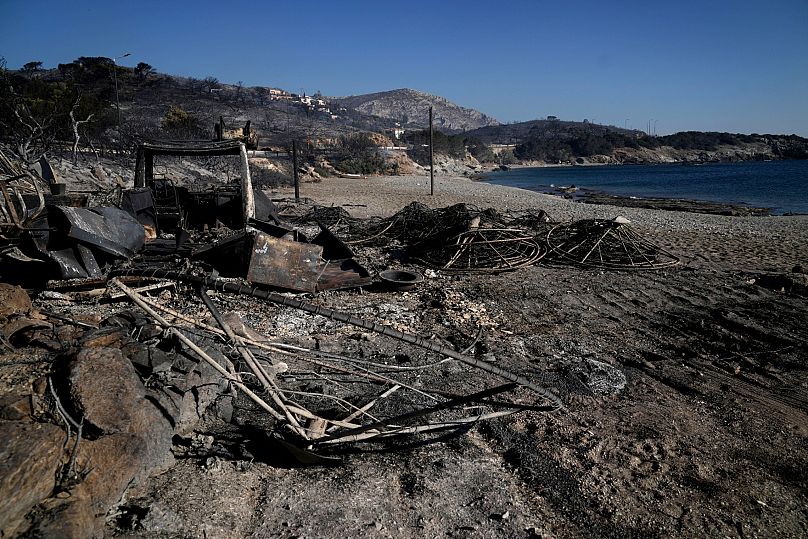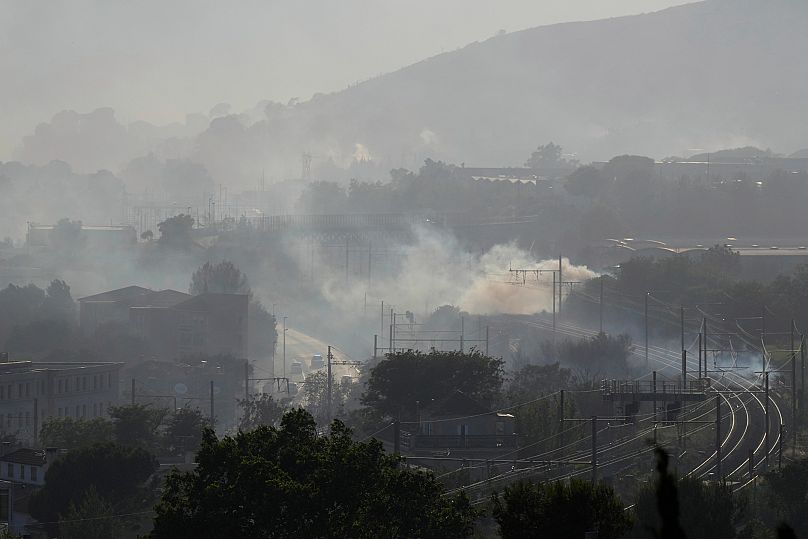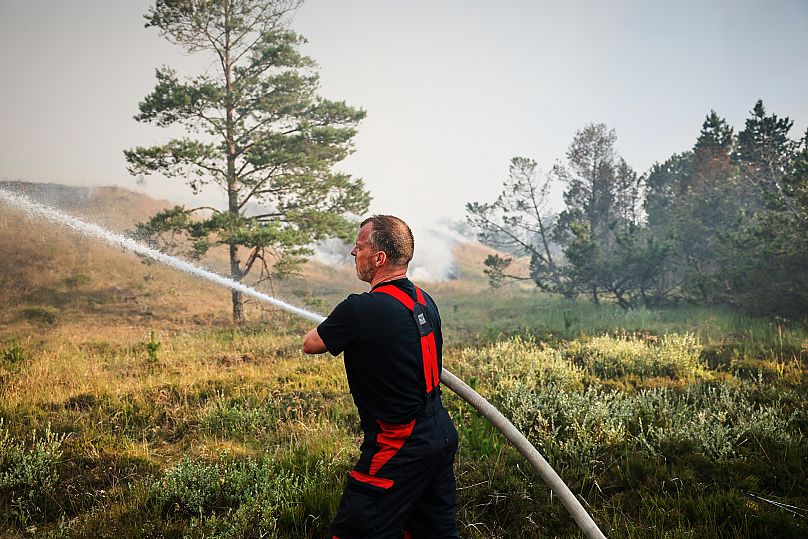An area almost the size of Luxembourg has been burnt by wildfires in Europe so far this year, according to the EU's European Forest Fire Information System (EFFIS). As of 15 July, the cumulative total of scorched land stands at 231,539 hectares - 119 per cent above the long-term average of 105,586 hectares for this time of the year.
In recent weeks, wildfires have forced tens of thousands of people to flee their homes and claimed at least three lives in Türkiye, necessitated lockdowns in Catalonia, led to mass evacuations from Crete, and caused havoc around Marseille. This list is not exhaustive, and is certain to extend as summer swelters on.
“We can see that it's looking fairly extreme this year,” explains Sarah Carter, a research associate at Global Forest Watch.

“This is perhaps what's to be expected because we know that 2023 was the warmest year on record, 2024 was the warmest year on record, so we're expecting that these hot, dry conditions are just going to continue,” she says.
“It's this kind of perfect storm of heatwaves, drought, and also the way that we manage our forests, which are driving forest fires.”
How is climate change fuelling more wildfires?
EFFIS data shows the weekly cumulative number of fires is significantly above average, too. It stands at 1,230 as of 15 July, compared to the average of 478 for this time of year.
However, most of this increase was felt in February and March due to dry and warm conditions in western and central Europe. The same is true of the unusually high figure for total area burned.
A European Commission official clarified that figures for burned areas after March are very similar to the long-term average.
Carter isn’t totally sure why some fires are moving earlier in the year. But, broadly speaking, she attributes it to the trend of summers getting warmer and hotter for longer, due to the rise in greenhouse gas emissions from burning fossil fuels.

“If a fire season is normally concentrated in a couple of very hot months in the middle of the summer, it's going to expand either side of that because of the way that the climate is warming,” she explains.
“The warm summer season is basically expanding.”
Increased carbon emissions in the atmosphere drive hotter conditions with less rain. This dries forests out, making them more prone to fires, and meaning that larger areas go up in smoke.
Up to 16 July, the total estimated carbon emissions from wildfires across all EU countries are 1.9 megatonnes of carbon, according to Mark Parrington, senior scientist at Copernicus Atmosphere Monitoring Service (CAMS). That’s based on CAMS’ data from its Global Fire Assimilation System (GFAS).
Emissions from wildfires feed into a devastating cycle, making forests even more vulnerable, and so fires more extreme.
Which countries have been particularly scarred by wildfires this year?
In Türkiye, wildfires in late June and early July have resulted in record burned area figures for this time of the year, the EU Commission official says. This record figure has been driven by the large scale of some of the fires.
These huge blazes have pushed emissions to a record high in the 22 years of the GFAS dataset, Parrington adds. They are currently around twice the average for the time of year, as fire emissions typically increase at the end of July and into August for Türkiye.
Fire emissions from the UK have also reached their highest annual total of the past 22 years, he says, following large fires in Scotland.
In wildfire-prone Greece, fires have resulted in a higher-than-usual total burned area for this time of year, too.
But it’s Romania that leaps out of the bar chart when looking at the EFFIS data for the percentage of the country's area burned by wildfires. Around 23,000 hectares are burnt on average each year, while for 2025 the figure stands at 123,000 hectares.
Again, officials link this to the anomalous dry and warm fire-spreading conditions from February to March. Since April, burned area figures in Romania have stabilised.
It can seem “like the whole of Europe is on fire,” says Carter, “but actually northern Europe is fairly resilient to fire.”
According to GFW’s annual tree cover loss data, only 3 per cent of tree cover loss in Europe last year was due to fire; the vast majority was instead caused by forestry.
But in southern Europe, it's a different story. The impact can be devastating, with huge proportions of forest loss caused by wildfires in Portugal, Greece, and Spain in recent years.
Some fires are becoming unfightable
Better forest management involves embracing a mosaic model, says Carter, with diverse levels of vegetation, and steering clear of flammable species like eucalyptus. Keeping moisture in the soil is key, as is creating fire breaks by removing any flammable material.
But in some areas, the combination of dry conditions and strong winds means “some fires now are just not going to be able to be fought.”

This makes early warning systems essential to keeping people safe. Using EFFIS data, the Commission’s Joint Research Centre (JRC) issues fire alerts, while the Global Forest Watch also provides ‘disturbance alerts’.
“I don't really expect anything much different to business as usual this summer,” says Carter. “So I think people have got to be prepared for worsening air quality, for dangers to their houses, livelihoods, businesses, and tourists going to these southern areas have to be aware.”







